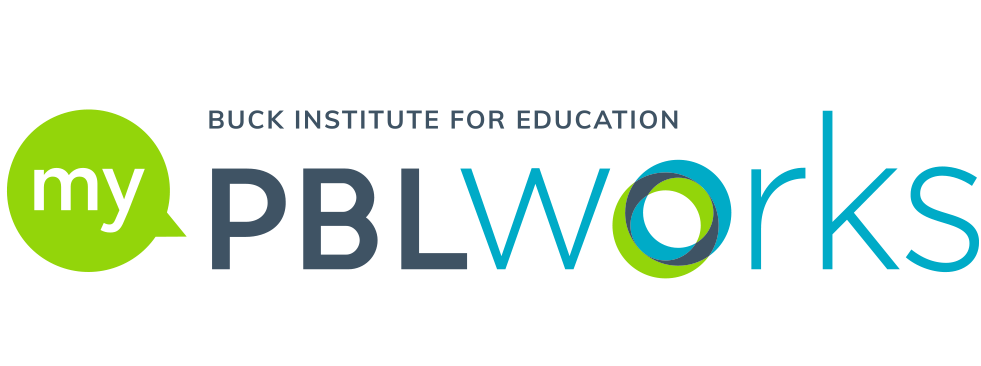Gold Standard PBL: Sustained Inquiry
The concept of inquiry has always been one of the most challenging elements of PBL to explain. To most people, “inquiry” basically means “research,” which makes it sound like something students might do when they study science or history, but not in math, English Language Arts, Career/Tech, the arts, and so on. But in PBL it’s much more than that, as we and others have explained. All PBL teachers should have students conduct inquiry – it just might look different in various grade levels, subject areas and types of projects.
We’ve made “sustained inquiry” one of the Essential Project Design Elements in our model of Gold Standard PBL because it’s so important in distinguishing PBL from other classroom activities that are sometimes called “projects.” Take a look at how the sustained inquiry row of our Project Design Rubric describes it:
So, given this definition and distinction, what does sustained inquiry look like in various projects?
We discussed this topic in a Hangout last week with two of our National Faculty, Shalini Patel and Mike Fenlon, and a teacher from Katherine Smith Elementary School, Fabiola Gonzalez. They each shared a project they’ve taught and the role inquiry played in it.
Shalini described a first grade science “healthy lifestyle” project with the driving question, “Are we really what we eat?” The inquiry process began when her students saw her eating a healthy snack (an apple and string cheese stick) that contrasted with their typical bag of chips, which made them ask questions about what it was, how it tasted, why she was eating it, and so on. As an entry event to the project, she showed a cartoon about the effect of what you eat on how you play basketball, which provoked further questions about why some foods made you play better. Other project activities deepened students’ questions; they conducted a survey of other students and their families, read informational text about nutrition, and heard from a visiting nutritionist, which also helped keep students engaged. Shalini pointed out that the inquiry was an iterative process. At each step students thought about what knowledge they were gaining and decided what new questions they needed to ask. At many points during the four-week project, the class revisited the driving question and their ever-evolving list of questions before creating their final product, a video aimed at other students.
Fabiola shared her kindergarten ELA project – still ongoing at this writing – which shows how inquiry plays a part in projects that do not involve “research” per se. The entry event was a visit from the preschool teacher, who asked the students for help in answering the driving question, “How can we teach letter sounds to preschoolers?” This prompted the kindergarteners to ask questions such as, “What are letter sounds?”, “How can we teach the preschoolers?”, and “When will we teach the preschoolers?” Fabiola had a great way of explaining the overall point of inquiry in her projects: students are challenged to “prove” their answer to the driving question. One example she gave of inquiry in a non-traditional sense was when one student struggled to figure out the best way to demonstrate the word “elephant” to give an example of the short “e” sound. His classmates helped him decide to flap his hands next to his head like an elephant’s ears.
Mike mentioned that he liked the use of the word “sustained” when describing inquiry in PBL because it emphasized that “we can go back to the inquiry, making sure we scaffold time throughout a project to really dig deep and reflect on how we can get better at what we’re doing.” He shared a high school STEM project he’s done that includes physics and algebra. After an entry event that was sure to engage students – a drag race between two cars in the back of the school campus - the driving question was presented: “How can we design and create a gravity-powered vehicle to go as far and as fast as possible?” The inquiry process began with student teams using the Question Formulation Technique to generate questions and prioritize their top three. During the project, inquiry included gathering data from repeated tests of prototype vehicles, and talking with guest engineers brought into class.
It’s clear from the above examples that inquiry is not the same as “research.” Students can find answers to their questions from many sources, including readings but also experts, experiments, and field work. They might inquire into the needs of the users of a product they are creating or the characteristics of the audience to whom they will present their work by interviewing focus groups. They might inquire into the best materials to use when creating a product, or the best way to capture data or mathematically model a phenomenon. In projects in ELA or the arts, students might inquire into how a writer or an artist can best express an idea or communicate a message.
Here’s a summary of how the teacher guides inquiry in a general sense, for any kind of project:
- Conducts an entry event to provoke questions and presents/co-constructs a driving question
- Facilitates a process for generating student questions
- Guides students in finding and evaluating sources of information to answer questions
- Provides scaffolds and support (e.g., lessons, workshops, note-taking guides)
- Provides additional resources and experiences to generate deeper questions
- Helps students reflect on the answers they find, and apply their new knowledge to project tasks
How do you guide inquiry in a project? Share your thoughts in the comments below.
Some material drawn from Setting the Standard for Project Based Learning (ASCD 2015) authored by the Buck Institute for Education.
To view or download this resource, log in here.
Login